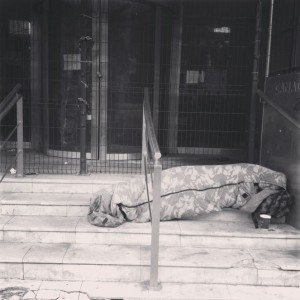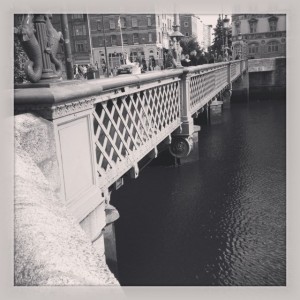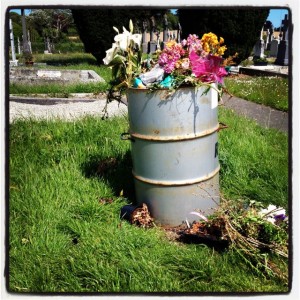Our class saw Dublin’s identity engrained in towering, graffiti ridden social housing flats in Dublin 8. We saw the changing culture absorbed in the Guinness Factory half a block away. Dublin’s past danced around us as our professor softly sang the first few verses from Pete Saint-John’s, “Rare Old Times”. Darren’s soft, conversational voice carried half a block down the road, catching the curiosity of three ten year old girls on their way home from school. They smiled in recognition of the tune and the boldest of the bunch joined in on the chorus. She proudly exclaimed, “my father used to sing this”! The song was written 25 years before the girls were born, yet the story of change that struck their neighborhood was preserved and passed down to them through the oral tradition of song.
I could not think of one American song that myself, my ten year old cousin, my parents, and grandfather might all be able to sing from memory. Certainly none that highlighted the changing landscape and demographic of Philadelphia; that’s something you learn about in American History classes focused on industrialization or gentrification. A month in Dublin has shown me music is not purely for fun and entertainment, but a glue that holds together generations, reminding everyone of the struggles and triumph that accelerated Dublin into a post-modern hub of commerce and education.
If there was one unifying characteristic I’ve found in all Irish people, it is a deeply engrained identity with their hometown; where you are is who you are. If born in Belfast it doesn’t matter if you moved to Dublin as a kid; you would never root for any club but Bredagh (Belfast’s club). In Ireland, your past matters, it makes you, and just like the Gaelic Athletic Association, folk songs like “Rare Old Times” have acted as an integral preservation of Irish identity.
“Rare Old Times” chronicles change in Dublin during one man’s lifetime. He was a “cooper”, one that would repair and make casks at the Guinness Factory. Like his tenement flat, demolished and replaced by social housing, his trade was lost as even the Guinness Factory bowed to modernization. Historic and cultural landmarks of Old Dublin vanished, and, “tall glass cages”, apartment buildings and office complexes, “spring up along the Quay”.
I find Dublin westernized and modern, the romanticized vision I had of an old Ireland is surprisingly hard to find. The Celtic Tiger transported Dublin from a simple city to a posh, expensive, economic force of Western Europe. I think Dubliners see now what they’ve lost during rapid growth; a language, a culture; most importantly an unshakeable sense of community. Apparent and encouraging is Dublin’s conscious effort to regain it’s true identity. Signs, maps, descriptions around the city are written in English and Gaelic, Croke park is the fourth largest stadium in all of Europe though it hosts only Gaelic Games, and ten year old school girls, with nap-sacks on their shoulders, clad in plaid jumpers, can recite, “Dublin in the Rare Ould Times”.




